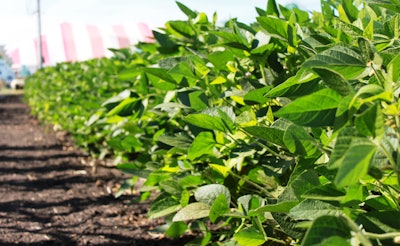
On June 30, the USDA will release an estimate of U.S. stocks of soybeans as of June 1 and forecasts of planted and harvested acreage. Both reports will provide important information to the soybean market, but the acreage forecasts should have more important price implications than the stocks estimate since soybean consumption is mostly already known. While the acreage estimate may be more important, there is more to say about the stocks estimate.
Since the magnitude of both the domestic crush and exports during the previous quarter are mostly known, the stocks estimate is expected to reveal the smallest June 1 inventory in 37 years. However, there is always room for some surprise in the June 1 stocks estimate as the magnitude of seed and residual use in the previous quarter is revealed. In addition, the unknown magnitude of imports during May will be reflected in the stocks estimate. Based on estimates from the National Oilseed Processors Association, members crushed 9.3 percent more soybeans during March-May this year than during the same three months last year. Crush estimates for the entire industry are not available, but the crush by NOPA members accounted for 95.7 percent of the industry total in the 10 months prior to the discontinuation of the Census Bureau crush estimates after June 2011. The USDA no longer makes quarterly crush estimates, but the NOPA estimates have represented 95.4 percent of the USDA marketing year estimates in the past two marketing years. Assuming that ratio for the most recent quarter, the NOPA crush of 415.3 million bushels points to an industry total of 435.3 million bushels.
Census Bureau export estimates are available through April while USDA estimates are available for the entire quarter. Through April, cumulative marketing year Census export estimates exceeded USDA export inspection estimates by 23.5 million bushels. Assuming that margin persisted through May, exports for the March-May quarter are estimated at 186.7 million bushels. Census Bureau estimates of soybean imports are also available only through April. Imports in March and April totaled 10 .7 million bushels and cumulative imports for the year totaled 31 million bushels. If imports are to reach the 90 million bushels projected by the USDA, imports during the last four months of the marketing year need to average 14.8 million bushels per month. If May imports were at that level, March-May imports would have totaled 25.5 million bushels.
Seed and residual use of soybeans during the March-May quarter ranged from 11.7 million to 62.7 million bushels in the previous 10 years. The average use was 41.2 million bushels, very close to the average of 47.6 million bushels in the past two years. If use this year was at 47.6 million bushels, total consumption of U.S. soybeans during the March-May quarter would have been near 669.6 million bushels. With March 1 stocks of 992.3 million bushels and quarterly imports of 25.5 million bushels, June 1 stocks would have totaled 348.2 million bushels.
Unless June 1 stocks are 25 to 30 million bushels larger than expected, the domestic soybean crush during the final three months of the marketing year will have to be much smaller than during the same three months last year, and/or imports will have to exceed the projected level, in order to maintain year-ending stocks at a pipeline level. Stocks below the expected level would obviously require a larger drop in the domestic crush or increase in imports.
The USDA's March Prospective Plantings report revealed producer intentions to plant a record 81.493 million acres of soybeans this year, 4.96 million acres more than planted last year. The surveys for the June 30 Acreage report were conducted mostly in the first two weeks of June, so that forecasts of planted and harvested acreage will reflect some level of intentions. The USDA's weekly Crop Progress report indicated that eight percent of the soybean acreage was yet to be planted as of June 15, mostly double-cropped acres following wheat harvest. Much of the uncertainty about the June acreage forecasts relative to March intentions centers on northern producing states where wet conditions delayed corn planting and may have resulted in some switching to soybeans. Extreme wet conditions, however, may also result in some acreage not planted at all. Those prevented plantings may not all be revealed in the June surveys.
For the most part, expectations are that the upcoming forecast of planted acreage will not be smaller than March intentions. If large acreage is confirmed, prospects for a record large soybean crop and a build in stocks during the year ahead will be maintained. The potential U.S average yield and size of the crop will be indicated by the weekly crop condition ratings. In the first two reporting weeks, the percent of the crop rated in either good or excellent condition was record large. That percentage is expected to decline as the season progresses, as it almost always does, but will likely be above average for at least the next few weeks.
Issued by Darrel Good
Department of Agricultural and Consumer Economics
University of Illinois
Also available at:
http://farmdoc.illinois.edu/marketing/weekly/html/062314.html















